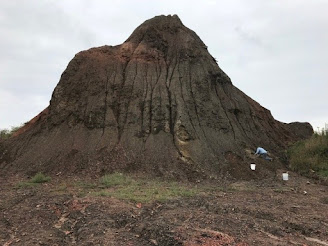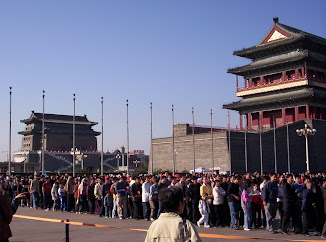April 22, 2005
April 22, 2005
This morning we explored south Florida driving past Miami to Homestead. There we turn west into Everglades National Park. Just past the entrance we stop at the main Visitor Center and peruse their exhibits. We learn that the Everglades is a hundred-mile wide shallow river that drains water from central Florida southwest towards the ocean. With intensive Florida real estate development, much of this water flow has been diverted leaving little left for the Everglades.
The main road thru the Everglades dead-ends at the ghost town of Flamingo on the southwest coast. The Flamingo Visitor Center ranger suggested a canoe trip as a good way to see this part of the park. So we make arrangements to rent a canoe and have it dropped off at Hells Bay Trailhead. It is about ten miles back up the road. In the few minutes it takes us to put the canoe in the water, load it, and apply bug spray, we are bitten by a horde of mosquitoes. And this is the dry season! I would hate to be here in the rainy season. Fortunately after a few paddles in, the mosquitoes pretty much disappear. Fish must eat the mosquito larvae in deeper water.
The first section of this canoe trail is a narrow water path through a dense jungle-like mangrove forest. It is so narrow and winding we mostly just push our canoe forward instead of paddling. The Mangrove tree is unique being one of the few plants that can grow in either fresh or salt-contaminated (brackish) water. I thought this area was pretty cool. Aimee was scared that an alligator would swamp the canoe at any moment. I tried to reassure her that alligators only like fresh water, not the brackish water found close to the coast. What I didn’t tell her was that crocodiles infest the coastal brackish swamps.
Eventually the canoe trail opened up into a series of larger pools. We had to keep an eye out for the periodic PVC pipes that mark the trail so we don’t take a wrong turn and get lost in this watery maze. I started out thinking I should have brought a compass along in case we lose the trail. But since the trail is far from a straight line, I don’t think it would have helped. At this point it starts to drizzle. It is warm and we are sweating, so we don’t mind the rain. Unfortunately the farther we go the harder it seems to rain making it difficult to enjoy the scenery and solitude.
After paddling quite a ways the trail widens into more bay-like surroundings even though we are still far from the coast. The rain has finally stopped. Here we decide that, lacking a detailed map, we should probably turn around. Despite the rain, a canoe was a pretty cool way to see this very strange part of our country. For the more adventurous and better prepared, there is a multi-day 99-mile Wilderness Waterway canoe trail that winds its way through the southwestern Florida Mangrove forest. The Park Service has built platforms along the route for overnight camping.
Back at the trailhead, we abandon the canoe, and drive out the main park road. Along the way we stop at several hiking pullouts. Most of the park interior is a sea of grass with islands of trees. I would guess that in the rainy summer season, the grassy parts fill with water to some level. Near the park entrance we stop at the Royal Palm area, which contains a lake, crisscrossed with a boardwalk. Here we see lots of alligators. Some are a little too close for Aimee’s comfort. We are told that during the dry season, the alligators concentrate in isolated lakes like the one here. In the rainy season, they disperse out into the flooded grassland.

















































